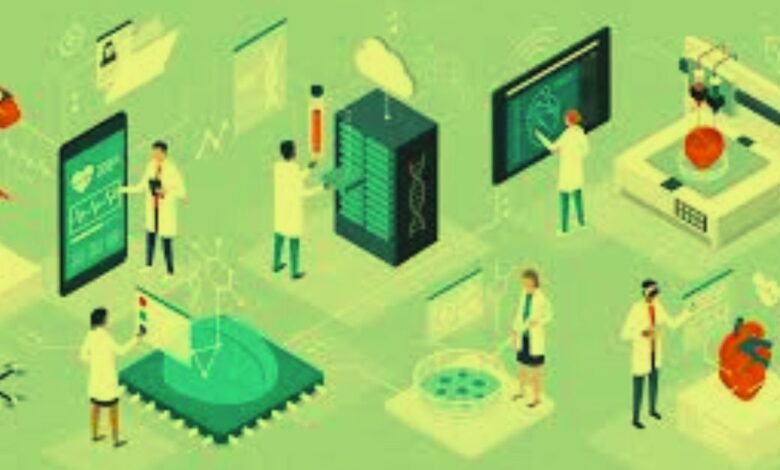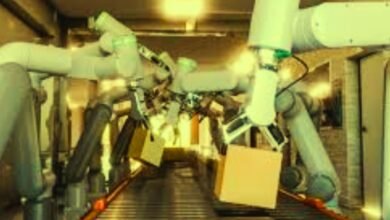Revolutionizing Healthcare with Robotics: Emerging Trends in 2024

In recent years, robotics has emerged as a powerful force driving significant change across various industries, and healthcare is no exception. With advancements in artificial intelligence (AI), machine learning, and robotic engineering, robotics is transforming how medical procedures are performed, how patient care is delivered, and how healthcare systems operate. As we move into 2024, the convergence of technology and healthcare is becoming more profound, with robotics playing a pivotal role in shaping the future of medicine. This article explores the emerging trends in healthcare robotics and how they are revolutionizing the industry.
1. Robotic-Assisted Surgery: Precision and Efficiency at the Forefront
One of the most notable innovations in healthcare robotics is robotic-assisted surgery. Surgical robots, such as the da Vinci Surgical System, are already used in various types of surgeries, including urological, gynecological, and cardiovascular procedures. These systems provide surgeons with enhanced precision, greater flexibility, and improved control, allowing for minimally invasive operations with smaller incisions and faster recovery times.
In 2024, the integration of AI and machine learning is set to elevate these robotic systems even further. AI-powered robots will assist surgeons in real-time by analyzing data from past surgeries, predicting potential complications, and offering suggestions to optimize performance. This increased level of precision and decision support is expected to significantly reduce surgical errors, enhance patient outcomes, and shorten hospital stays.
2. Robotics in Rehabilitation: Personalized and Accelerated Recovery
Robotics is also making strides in rehabilitation, offering patients personalized and efficient recovery plans. Robotic exoskeletons and prosthetics are enabling patients with mobility impairments to regain independence, while robotic physical therapy systems are helping patients recover faster after surgeries or strokes.
In 2024, more advanced rehabilitation robots will be able to monitor and adapt to individual patients’ needs in real time. With the aid of AI, these systems will tailor rehabilitation exercises based on the patient’s physical condition, progress, and pain levels. These intelligent systems will not only accelerate recovery but also reduce the burden on physical therapists, allowing them to treat more patients and focus on critical tasks.
3. AI-Driven Robotics for Diagnostics
AI-driven robotic systems are also transforming the way healthcare professionals diagnose diseases. Robotics is being integrated with advanced imaging techniques, such as MRI and CT scans, to provide more accurate and timely diagnoses. Robots powered by AI can analyze images more quickly and accurately than human doctors, identifying early signs of diseases like cancer, heart conditions, and neurological disorders.
In 2024, the integration of AI with robotics will enable diagnostic robots to provide a more comprehensive understanding of a patient’s condition. These systems will leverage massive datasets and continuously improve their diagnostic capabilities through machine learning, helping clinicians make faster and more accurate decisions. The use of robotics in diagnostics will also make healthcare more accessible, especially in underserved areas with a shortage of specialized medical professionals.
4. Autonomous Robots for Elderly Care
As the global population ages, the demand for elderly care is increasing rapidly. Autonomous robots are playing an essential role in improving the quality of life for elderly individuals, offering assistance in daily activities, monitoring health, and ensuring safety. These robots can provide medication reminders, assist with mobility, and help monitor vital signs, ensuring that elderly patients receive the care they need without the constant presence of a caregiver.
In 2024, we can expect these robots to become more intuitive, capable of adapting to the unique needs of each elderly person. Powered by AI, these robots will be able to detect changes in a person’s condition, such as early signs of illness or injury, and alert caregivers or medical professionals. The use of these autonomous robots will not only provide peace of mind for families but also ease the pressure on the healthcare system by reducing the need for human intervention in routine tasks.
5. Robotics in Pharmacy: Enhancing Efficiency and Accuracy
Robots are also making waves in the pharmaceutical industry, where they are streamlining drug production, dispensing, and even personalized medication. Pharmacy robots are already being used to automate the process of filling prescriptions, ensuring accuracy and reducing human error.
Looking ahead to 2024, the use of robotics in pharmacies will expand further, with robots offering more complex services such as preparing customized medication doses based on a patient’s individual requirements. AI-powered robots will assist pharmacists by analyzing patient histories, recommending alternative treatments, and ensuring that the correct medication is dispensed. These advancements will significantly improve efficiency and reduce wait times for patients, allowing pharmacists to focus on patient consultations and complex cases.
6. Robotic Nursing Assistants: Improving Patient Care and Reducing Strain on Healthcare Workers
The global healthcare workforce is facing significant challenges, including staff shortages and increased workload. Robotics is helping to address these issues by introducing robotic nursing assistants that support healthcare workers in providing better care while reducing the physical strain on them.
In 2024, robotic assistants will become more sophisticated, performing a wide range of tasks such as patient monitoring, taking vital signs, and assisting with patient mobility. These robots will be able to communicate with patients and healthcare workers, ensuring that patients receive timely care and enabling nurses and doctors to focus on more complex medical tasks. This trend will improve both the quality of care and the working conditions for healthcare professionals.
7. Robotic Supply Chain Management in Healthcare
Efficient supply chain management is essential to the smooth functioning of healthcare systems, particularly in hospitals and clinics. Robotics is being increasingly used to automate inventory management, order fulfillment, and the delivery of medical supplies. In 2024, we expect robotic systems to play an even larger role in managing hospital inventories and ensuring that critical supplies are always available.
AI-driven robots will be able to predict supply shortages, reorder supplies in real time, and track the location and condition of equipment across healthcare facilities. This automation will reduce human error, increase efficiency, and ensure that healthcare providers can focus on delivering care rather than managing logistics.
8. Ethical Considerations and the Future of Robotics in Healthcare
While the use of robotics in healthcare offers immense benefits, it also raises important ethical considerations. Issues such as data privacy, patient consent, and the potential for job displacement in the healthcare sector need to be carefully addressed. It is crucial for healthcare providers, policymakers, and technologists to collaborate on developing guidelines that ensure the responsible and ethical use of robotics.
As we move forward, a balanced approach will be necessary to integrate robotics into healthcare without compromising patient safety, privacy, or the human element of care. Continuous research, regulation, and public engagement will play vital roles in ensuring that robotics enhances healthcare without undermining its ethical foundations.
Conclusion: The Future of Healthcare Robotics
The rapid advancements in robotics are revolutionizing the healthcare industry, enhancing patient care, improving medical procedures, and driving efficiencies across various healthcare systems. In 2024, robotics will continue to play a critical role in reshaping how healthcare is delivered, from robotic-assisted surgery to personalized rehabilitation and AI-driven diagnostics.
As robotics continues to evolve, it holds the promise of creating a more efficient, accessible, and effective healthcare system that benefits both patients and healthcare providers alike. With the right investments in technology, training, and ethics, the future of healthcare robotics looks incredibly promising, ushering in a new era of medical innovation and patient-centered care.




